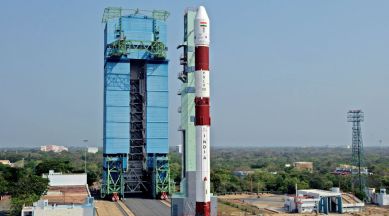Anonna Dutt is a Principal Correspondent who writes primarily on health at the Indian Express. She reports on myriad topics ranging from the growing burden of non-communicable diseases such as diabetes and hypertension to the problems with pervasive infectious conditions. She reported on the government’s management of the Covid-19 pandemic and closely followed the vaccination programme. Her stories have resulted in the city government investing in high-end tests for the poor and acknowledging errors in their official reports. Dutt also takes a keen interest in the country’s space programme and has written on key missions like Chandrayaan 2 and 3, Aditya L1, and Gaganyaan. She was among the first batch of eleven media fellows with RBM Partnership to End Malaria. She was also selected to participate in the short-term programme on early childhood reporting at Columbia University’s Dart Centre. Dutt has a Bachelor’s Degree from the Symbiosis Institute of Media and Communication, Pune and a PG Diploma from the Asian College of Journalism, Chennai. She started her reporting career with the Hindustan Times. When not at work, she tries to appease the Duolingo owl with her French skills and sometimes takes to the dance floor. ... Read More
In latest ISRO launch, solar panels to power final-stage experiments
For forthcoming PSLV missions, all four stages of the rocket will be integrated at the new facility, transported to the launchpad on a mobile platform, and then integrated with the satellite before launch.

The Indian Space Research Organisation (ISRO) Saturday successfully launched two commercial Singaporean satellites in a mission that, for the first time, will see solar panels powering the PSLV rocket’s final stage for conducting month-long experiments.
Usually, the fourth and final stage of a rocket remains in space for only a couple of days before dropping back into the atmosphere and burning up. And although ISRO has used this stage of the PSLV as an experimental platform twice before, this is the first time the agency has installed solar panels on it to generate energy. “For the first time, there will be a deployable solar panel on the upper stage of a rocket. That is another exciting thing to happen,” said ISRO chairperson S Somanath.
monthly limit of free stories.
with an Express account.
The PSLV-C55 rocket’s main payload is an earth observation satellite, TeLEOS-2, developed by SD Engineering. It will be used to support satellite imaging requirements of Singapore government agencies. Its predecessor, too, was launched by PSLV in 2015.
The other satellite is Lumelite-4, co-developed by the Institute for Infocomm Research and Satellite Technology and Research Centre of the National University of Singapore. Built to demonstrate the “High-Performance Space-borne VHF Data Exchange System”, it will augment Singapore’s maritime navigation and benefit the global shipping community, ISRO said.
India has offered at least nine launches to Singapore.
The fourth stage of the rocket, the PSLV Orbital Experimental Module, will conduct seven experiments. One mission by the Indian Institute of Space Science and Technology, ARIS-2, will study the ionosphere, the zone where Earth’s atmosphere meets space. The module is also carrying an electronic propulsion system by the start-up Bellatrix Aerospace and satellite deployment systems developed by the start-up Dhruva Space.
This is also the first time that the first two stages of the PSLV were combined at the newly created PSLV Integration Facility. This is important because it cuts down the time between missions. Rockets are usually assembled on the launch pad with the help of a mobile service tower — but this process can’t begin until the pad is prepared for the launch. Now, vehicle assembly can begin along with launchpad preparations.
For forthcoming PSLV missions, all four stages of the rocket will be integrated at the new facility, transported to the launchpad on a mobile platform, and then integrated with the satellite before launch.
ISRO has also made some design changes to the rocket to bring down the cost and integration time, keeping in mind that the established launch vehicle will be taken over by the industry for future missions. Although transfer of the PSLV to the industry has been in the works since before the space sector was opened up to private players in 2020, the recently released Indian Space Policy 2023 says ISRO will move out of routine activities and focus more on research and innovation.
“The goal is to have increased production and launches of PSLV in the times to come, especially as the industry is taking over from us to operate in large numbers,” the ISRO chairperson said after the launch.